The Anti-Democratic Electoral College
What happened to "the will of the people?"
The Electoral College. For many, it's a mysterious and often frustrating mechanism that dictates American presidential elections. Every four years, it reminds us that winning the most votes nationally doesn't necessarily mean winning the presidency. But to truly understand its impact today, we first need to look back at why it was created.
The Electoral College: Original Intentions and Modern Irrelevance
The framers of the U.S. Constitution designed the Electoral College as a compromise, a somewhat convoluted mechanism reflecting the political realities and anxieties of the late 18th century. Its primary motivations were multifaceted:
Bridging the State vs. Population Divide: The most cited reason was to balance the power of populous states with that of smaller states. Large states wanted direct popular elections, while small states feared being overwhelmed. The Electoral College gave each state a number of electors equal to its total congressional delegation (House members + two senators), providing a slight numerical advantage to less populated states.
Fear of an Uninformed Populace: Many Founders distrusted direct democracy. They worried that the average citizen lacked the information or wisdom to choose a national leader directly, especially across vast distances. Electors, it was presumed, would be educated local elites making an informed decision.
The "Slavery Question": This is often overlooked but profoundly important. Southern states, with large enslaved populations, feared that a purely popular vote would diminish their power, as enslaved people could not vote but constituted a significant portion of their populations. The Electoral College, by allocating electors based on total population (including the three-fifths compromise for enslaved persons), gave slaveholding states disproportionate power, enabling them to exert influence far beyond their voting citizenry.
But, the world of 1787 bears little resemblance to today. The original concerns that birthed the Electoral College are, in large part, no longer relevant:
An Informed Electorate: We live in an age of mass literacy, instant communication, and ubiquitous access to information (for better or worse). The idea of an uneducated populace incapable of choosing a president is an anachronism. Don’t get me wrong — we have an incredibly uninformed electorate, as evidenced by millions of Americans who voted for Donald Trump three times, but the Electoral College has done nothing to mitigate this issue, and in fact made it worse, with Trump winning in 2016 despite losing the popular vote.
Rapid Communication: News and information travel instantly. A candidate can campaign nationally and reach voters in every corner of the country without reliance on local "elites" to filter information.
The End of Slavery: The moral stain of slavery and its role in the Electoral College's design for political power is a historical fact that no longer justifies its continuation. Its disproportionate influence on certain demographics remains, but not in the original context of enslaved populations.
So, if its original justifications are largely obsolete, what does the Electoral College do today? Unfortunately, as the data unequivocally shows, it frequently circumvents the will of the majority of American voters.
Circumventing the Will – The Popular Vote/Electoral Vote Discrepancy
The most glaring and undeniably anti-democratic flaw of the Electoral College is its capacity to elect a president who received fewer votes nationally than their opponent. This is not merely a theoretical possibility; it has occurred multiple times in recent history, leading to significant questions about democratic legitimacy.
The United States has seen four presidential elections where the candidate who secured the Electoral College majority failed to win the popular vote: 1876, 1888, 2000, and 2016. In these instances, the discrepancy between the raw number of votes cast for a candidate nationwide and the distribution of electoral votes dictated the outcome, directly contradicting the principle of majority rule.
U.S. Presidential Elections: Popular Vote vs. Electoral Vote Discrepancies (1824, 1876, 1888, 2000, 2016)
The data in this chart illustrates a pattern that is, for many, deeply unsettling. In 2000, Al Gore secured over half a million more votes than George W. Bush. In 2016, Hillary Clinton won nearly 3 million more votes than Donald Trump. Yet, due to this archaic system, both lost the presidency. These are not simply "anomalies"; this is the system working exactly as it is designed to, which is to say, often against the clear will of the majority of voters. The outcomes demonstrate that the Electoral College can, and does, actively undermine the democratic principle of majority rule, replacing it with a system of geographically distributed, disproportionate power.
The Skewed Value of a Vote – Where Your Ballot Really Counts (or Doesn't)
Beyond simply electing the popular vote loser, the Electoral College fundamentally distorts the principle of "one person, one vote." The weight and impact of an individual's vote for president is not uniform across the nation; it varies significantly depending on their state of residence. This is not democratic; it is geographically determined vote power.
The allocation of electoral votes, based on a state's total number of representatives in Congress (House members + two senators), inherently gives smaller population states a disproportionate share relative to their actual population. Each state receives a minimum of three electoral votes regardless of how few residents it has.
Electoral College Vote Power: Population Per Electoral Vote by State (Most Recent Census Data)
In the map above, lighter shades represent a higher population per electoral vote (meaning an individual's vote has less proportional power in that state) and darker shades represent a lower population per electoral vote (meaning an individual's vote has more proportional power).
Population Per Electoral Vote: Selected "Most Powerful" vs. "Least Powerful" States
These visuals highlight a crucial disparity. If a citizen resides in Wyoming, their vote for president carries significantly more weight, proportionally, than if they reside in California. Wyoming receives three electoral votes for a population smaller than many major cities, while California, with its tens of millions of people, receives a proportional but comparatively less powerful per-person allocation. This is not "protecting small states" in a way that aligns with democratic equality; it is granting disproportionate power to a minority of voters based solely on geography. This fundamentally undermines the democratic ideal of equal representation.
The 'Swing State' Obsession – Ignoring the Rest of America
Another practical consequence of the Electoral College, particularly the "winner-take-all" system employed by most states, is that presidential campaigns almost exclusively focus their time, money, and attention on a handful of "swing states." If one resides in a solidly red or blue state, their voice, quite frankly, is largely ignored.
Presidential campaigns are rational actors. They allocate resources where they believe they can secure the most electoral votes for the least effort. This means heavily investing in states where the outcome is uncertain and largely bypassing states where the outcome is predictable.
In 2020, seven states were considered “swing states” in that the margin of victory was under 3%. Those states were Arizona, Georgia, Michigan, Nevada, North Carolina, Pennsylvania, and Wisconsin.
Distribution of Presidential Campaign Ad Spending (2020 Election Cycle) by State Category
As you can see in the pie charts above, the spending by presidential campaigns in “swing states” far outpaced the population of those states.
Presidential Candidate Visits by State (2020 Election Cycle)
The map above represents visits made by the presidential and vice presidential candidates of the 2 major parties during the 2020 election. Darker shades represent states with many visits, lighter shades represent states with fewer visits, and white represents states with no visits.
These visuals illustrate a stark reality. If one resides in a state like Arkansas or New York, presidential candidates likely did not spend much time visiting or saturating the airwaves with ads. The Electoral College makes it strategically rational for them to largely ignore those states because their electoral votes are already considered "locked in." Instead, candidates funnel virtually all their resources and attention into a handful of "swing states" like Pennsylvania, Arizona, or Michigan. This means millions upon millions of voters in "safe" states are effectively sidelined from the national political conversation, their concerns largely ignored by those seeking the highest office. This system is not creating a unified nation; it is creating a nation divided into electorally relevant and irrelevant zones.
How the Electoral College Can Be Changed
Given its demonstrably anti-democratic outcomes and the obsolescence of its original justifications, various methods have been proposed to reform or replace the Electoral College.
Constitutional Amendment:
Mechanism: This would be the most direct but also the most difficult path. An amendment to abolish or significantly alter the Electoral College would require a two-thirds vote in both the House of Representatives and the Senate, followed by ratification by three-fourths (38) of the states.
Feasibility: Due to the political polarization and the vested interest of smaller states (who benefit from the current system), achieving this level of consensus is exceedingly challenging. It has been attempted numerous times throughout history without success.
The National Popular Vote Interstate Compact (NPVIC):
Mechanism: This is an agreement among states to award their electoral votes to the candidate who wins the national popular vote, regardless of how the popular vote turns out in their individual state. The compact would only go into effect once enough states have joined to collectively possess the majority of electoral votes (currently 270).
Feasibility: This approach bypasses the need for a constitutional amendment. As of mid-2024, states accounting for 209 electoral votes have joined the NPVIC, meaning it needs just 61 more electoral votes to reach the threshold. This is considered the most viable immediate path to effectively implement a national popular vote for president without altering the Constitution itself.
When we cut through the historical reverence and the thin justifications, what remains is a system that is demonstrably anti-democratic in its practical outcomes. The Electoral College allows the loser of the popular vote to win the presidency, it fundamentally devalues the votes of millions of Americans based on their state of residence, and it encourages presidential campaigns to ignore the vast majority of the country.
If the overarching goal is truly a representative democracy where the leader is chosen by the most people, then the Electoral College stands as a significant impediment, not a protector. The numbers do not lie. The democratic ideal of "one person, one vote" is fundamentally undermined by this system, and fortunately, viable pathways for reform, particularly through the National Popular Vote Interstate Compact, exist.
What are your thoughts on these undeniable discrepancies and the potential paths to reform? Do you believe the Electoral College truly serves democracy in the 21st century? Share your perspectives in the comments below, and consider subscribing for more data-driven political analysis.
Paid memberships make articles like this possible. Your support helps cover the time, research, and work that go into each piece. If you find value in what you’re reading, consider becoming a paid Substack subscriber—it keeps this work going.



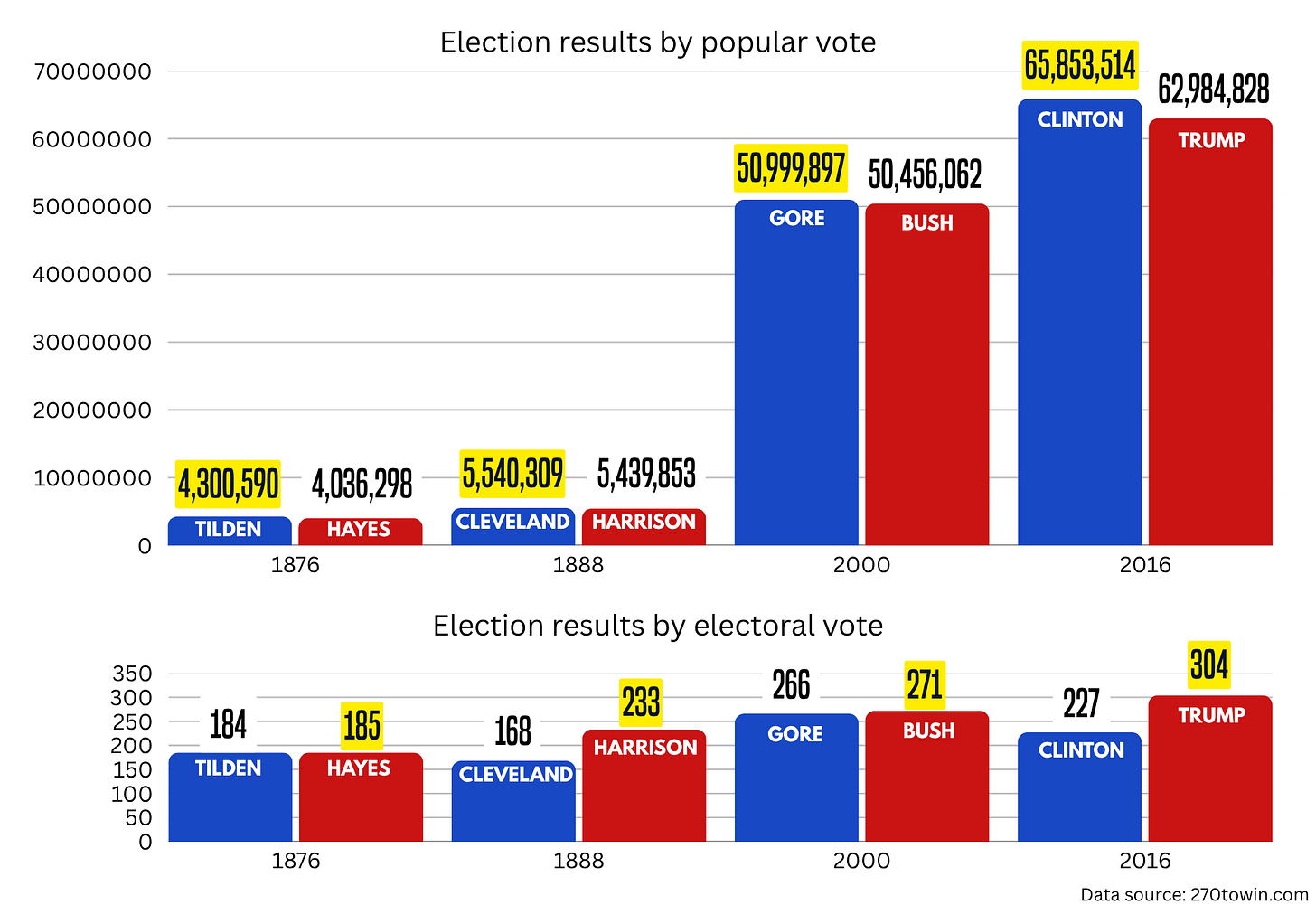
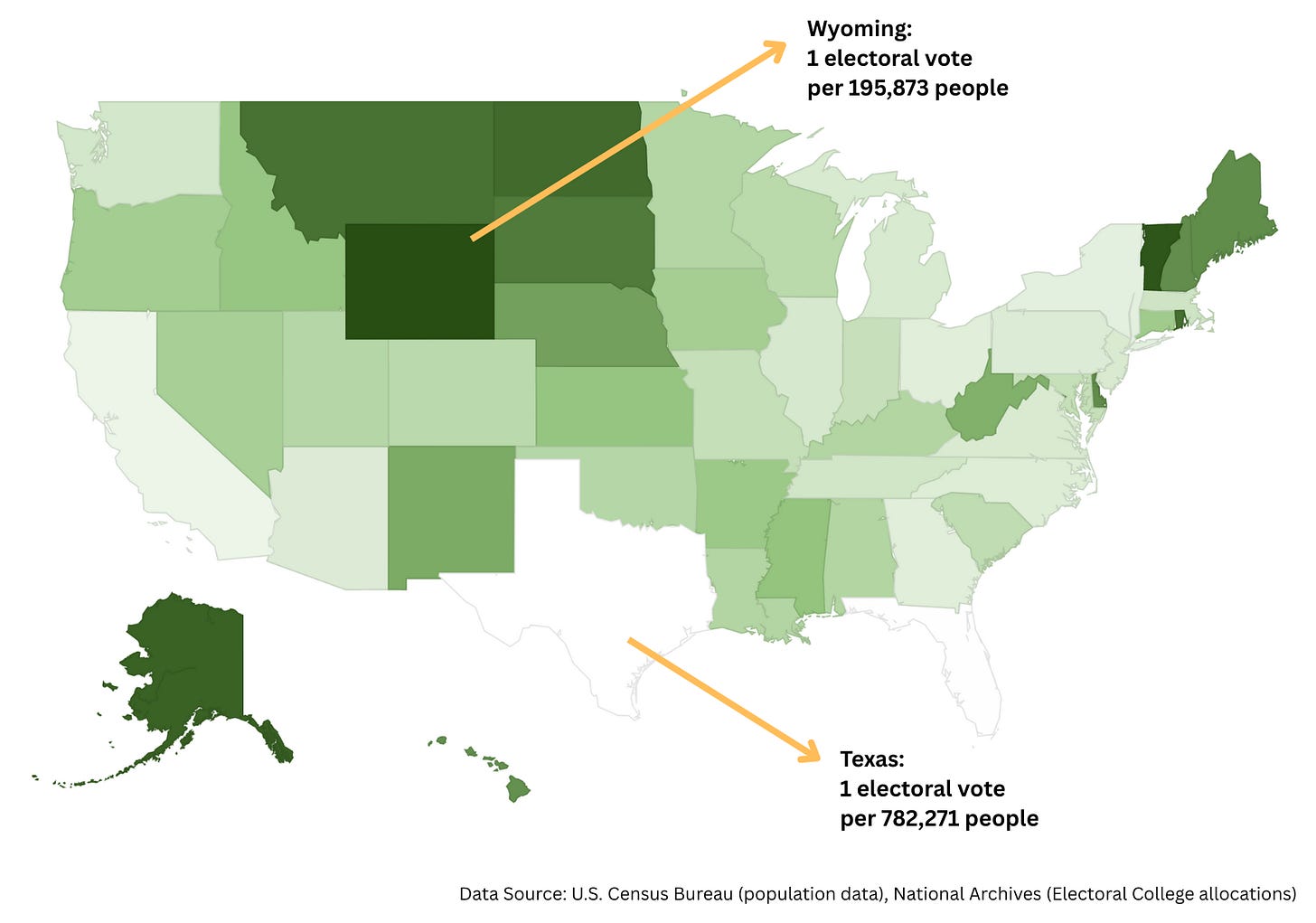
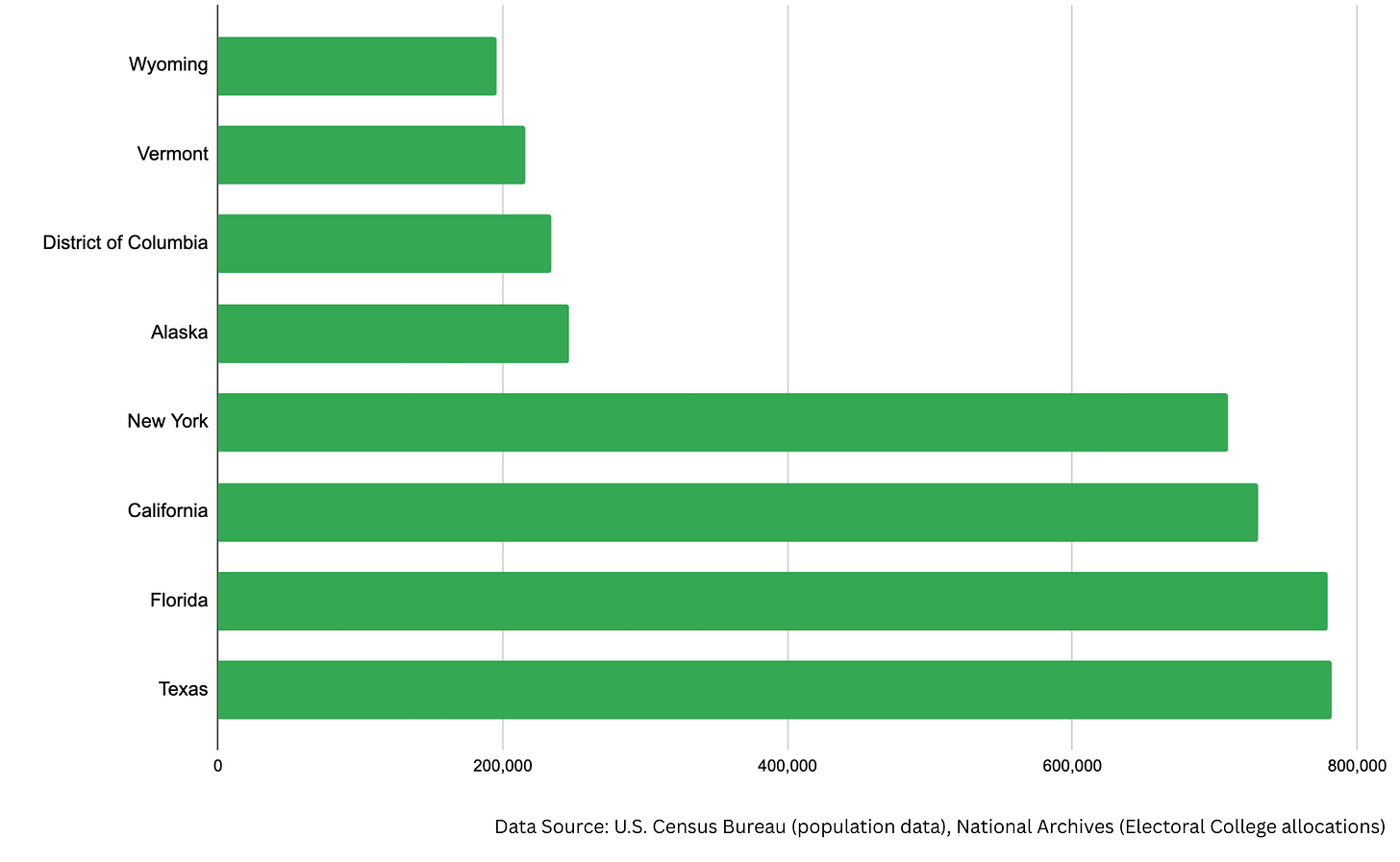
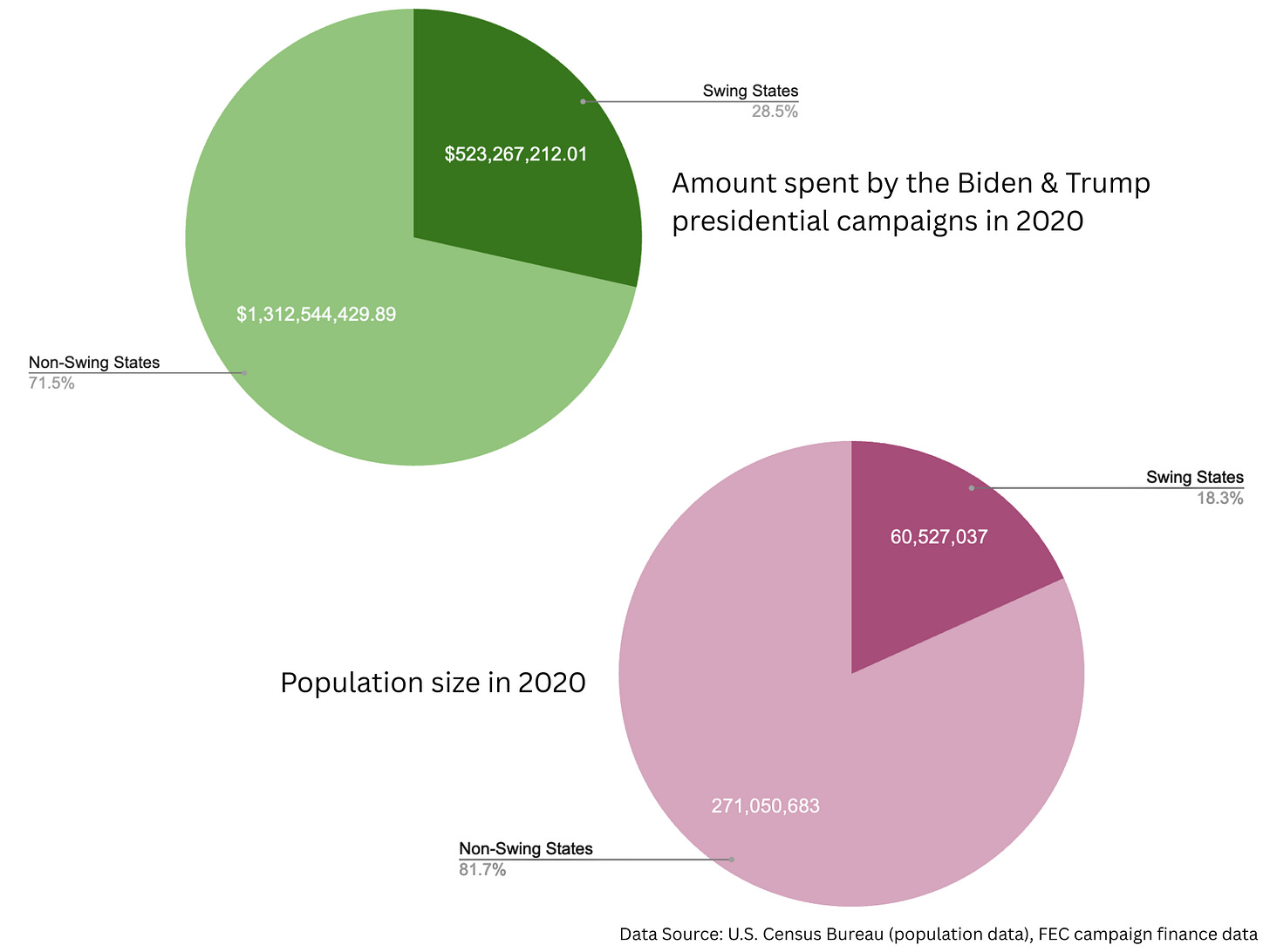
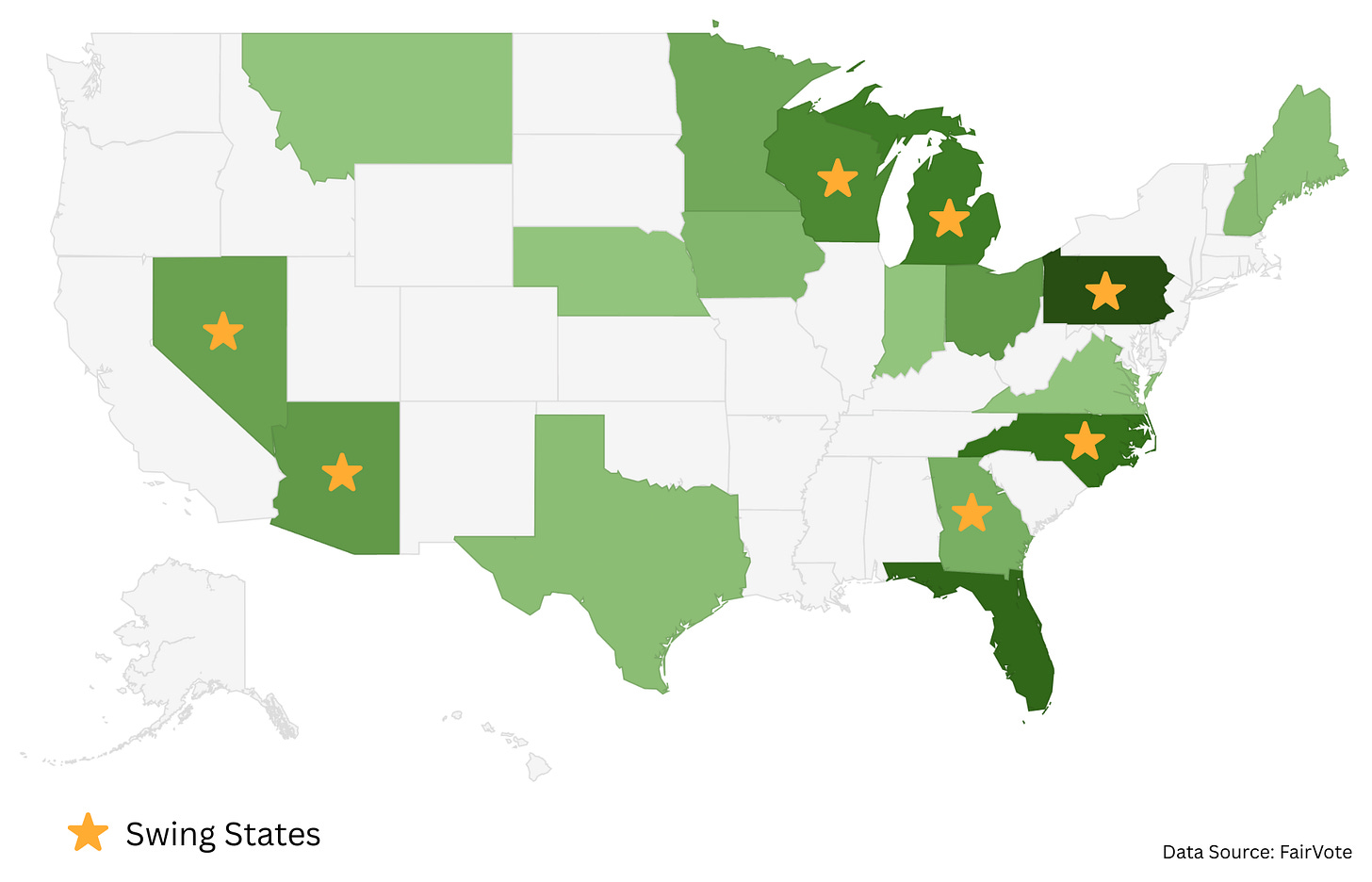
What a cogent and thought-provoking argument you present, David. Brilliant and time-consuming analysis that I hope is appreciated as much by your readers as it is by me!
Very good article. We need to do something drastic to get the will of the people because we definitely are experiencing taxation without representation. We also need to stop the wealthy lobbyist too.